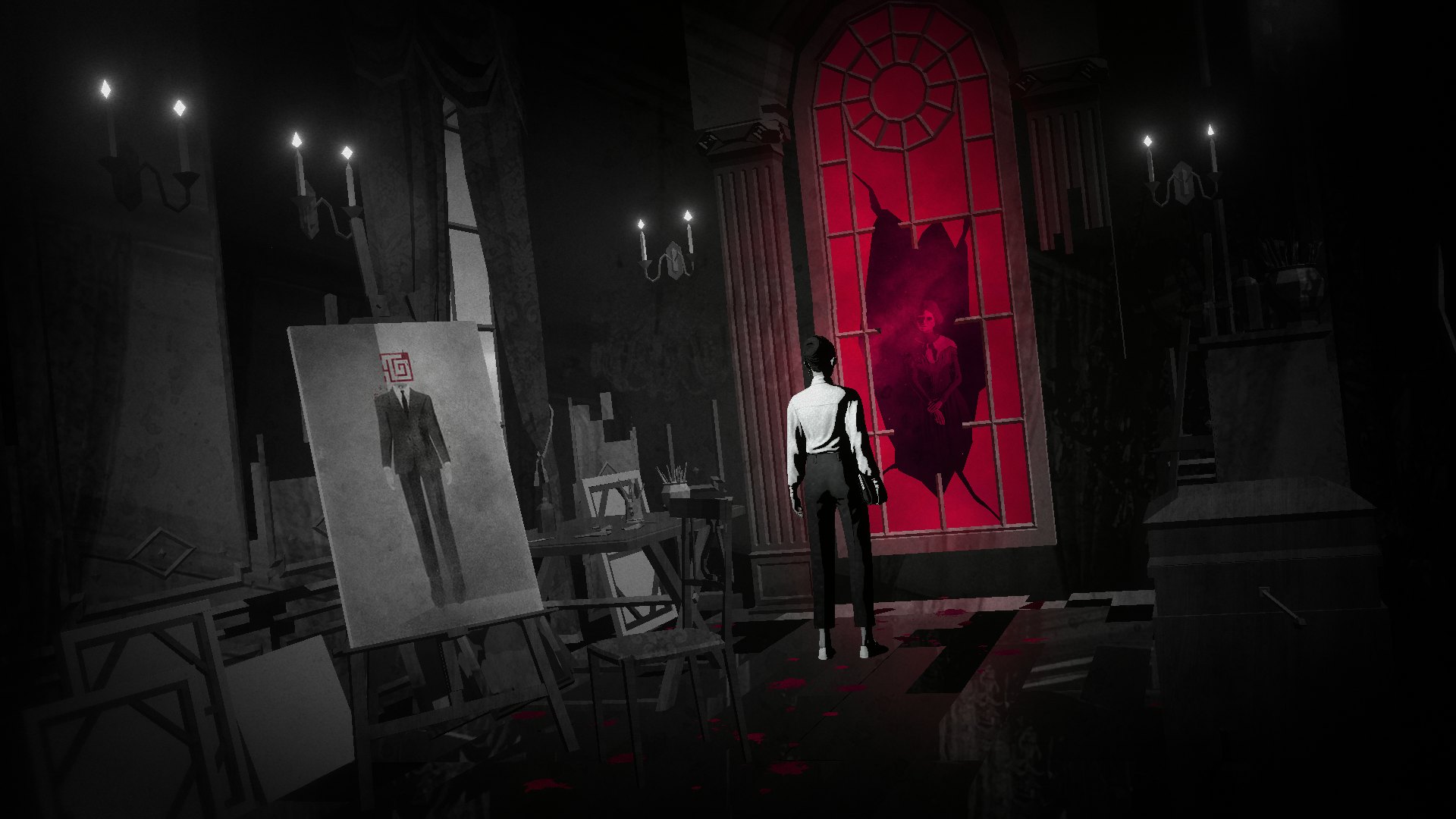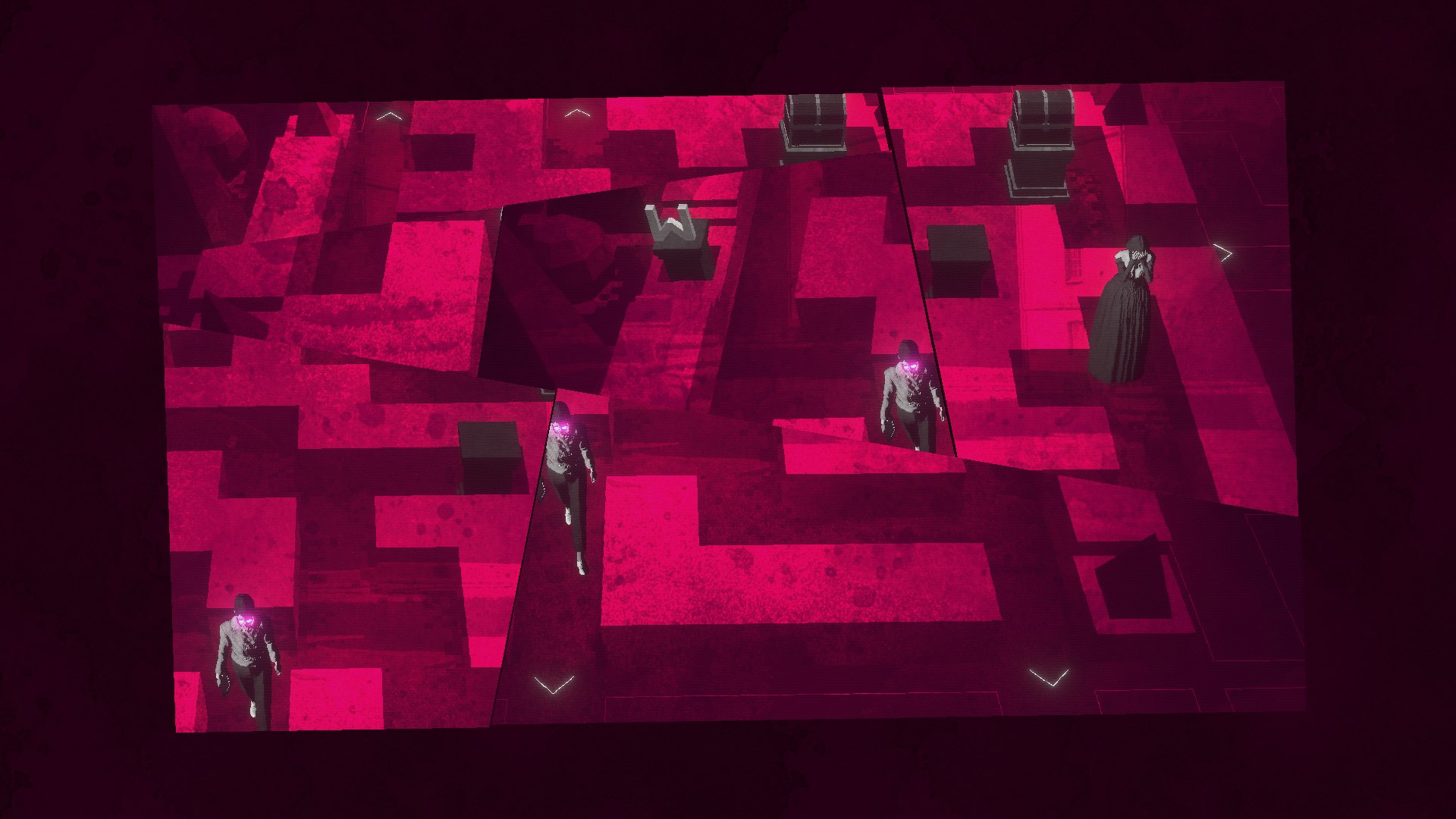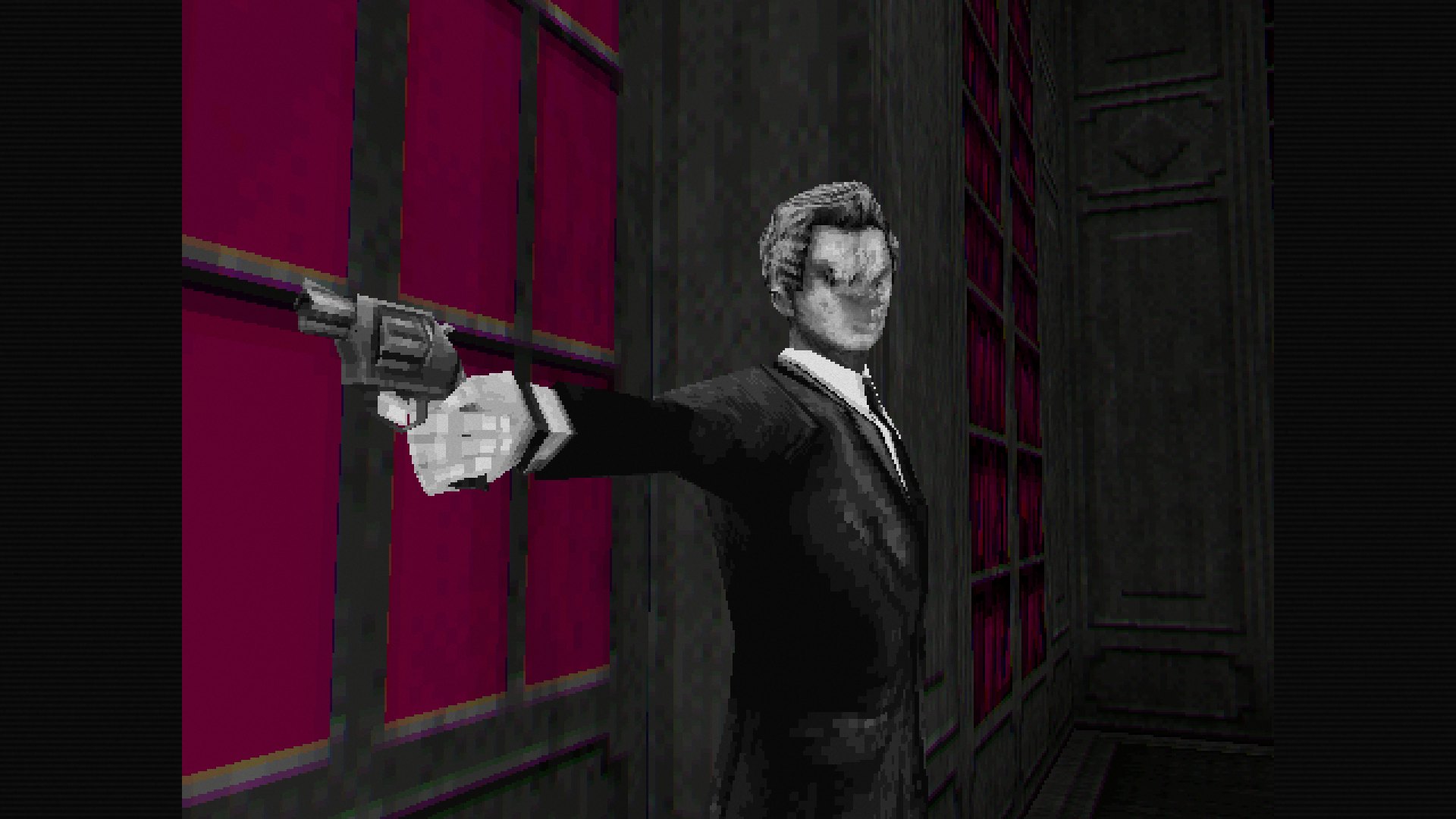
The year is 1963. Or maybe it’s 2014. In some places, it might still be 1847. A woman arrives at a hotel, which is also both a maze and an art project, and might be something altogether more sinister on top of that. In the glove box of her car is an instruction booklet for Lorelei and the Laser Eyes, the game you’re currently playing. All of this will make sense eventually, but first, you need to follow a girl in an owl mask, solve a series of cerebral puzzles, and untangle the lives of a group of people united by the pursuit of an artistic tour de force.
Lorelei and the Laser Eyes is the ninth game from Swedish developer Simogo, known for making indie sleeper hits. After the studio’s vibrant, mechanically light Sayonara Wild Hearts, Lorelei and the Laser Eyes marks a return to deep, challenging puzzles for the developer behind the acclaimed mobile puzzler Device 6.
At the outset of Lorelei, you know you’re here to unravel a series of mysteries. Among those are, what’s the history of the Hotel Letztes Jahr, where you just arrived, and who is the character you’re playing? Further riddles reveal themselves as you play, surrounding missing artists, fatal accidents, and ancient cults. Answering them all takes a lot of patience and the willingness to surrender yourself to the game’s surreal logic. It’s a challenging, sometimes grueling task, but in the end, Lorelei and the Laser Eyes is the most satisfying puzzle game I’ve ever played.
Puzzles within Puzzles

Things start simply enough. You find a letter dated 1962 telling you to arrive at the hotel in a year. To open the hotel’s gate, you just need to figure out what year you’re in. 1962 + 1 = 1963. Nice work, detective. But like a frog not noticing it’s boiling over slowly increasing heat, Lorelei’s puzzles steadily rise in difficulty, acclimating you to their unique complexities until by the final end, you’re using nonsense symbols like they’re your mother tongue, interpreting dreams to open sealed doors, and finding more patterns than you thought could exist in a series of repeating numbers.
The instruction booklet you grab from your car tells you to keep a notebook handy, and this is an absolute necessity. Reviewers were provided with custom notebooks that included some reproductions of in-game clues and templates to make tracing out some solutions easier. Also contained within are explanations of how Roman numerals work, a chart listing various astrological signs, and a primer on reading 24-hour clocks. Lorelei is a game that demands you bridge your real-world knowledge with its own internal rules, crafting solutions to puzzles that are grounded in two realities at once.
Sometimes, the game’s reality itself splinters, as solving the hotel’s mysteries takes you into supernatural hedge mazes and other games within the game. Just as each challenge demands you come around to its own unique logic, several points in Lorelei shift the game’s format entirely, playing with the way information is presented on screen and even how you control your character. You need to not only visit these other worlds, but learn their own rules and how to interact with them to bring back the information you need. These shifts in perspective are effective as ways to introduce new puzzles, but also profound as a means of showing you how their artificial worlds (in other words, works of art) can spill back out into the “real” world.

Within the complexity of solving the game’s riddles, there’s a satisfying simplicity, as so many solutions are about rearranging letters and numbers into familiar patterns. Padlocks abound in the Hotel Letztes Jahr, with countless number puzzles keeping you out. The solutions often repeat, with a handful of numbers you’ll soon know by heart unlocking dozens upon dozens of doors. With every puzzle in Lorelei, you’re not just asking “what’s the answer,” but “how does the game want me to use this answer?” Sometimes numbers are numbers, but other times they’re just shapes, or directions, or maps.
To use one of my favorite early series of puzzles as an example, at one point you come across a few locked rooms each with a movie poster outside. The code to open each door is contained in descriptions of those movies you find elsewhere, but none is as simple as just copying the answer. Some require you to add two numbers together, others ask you to rearrange the numbers according to an environmental clue. Inside each of these rooms, you find a lockbox and a letter. The letter offers hints that make it easy to guess the locks’ codes — they’re some of those oft-repeating numbers, in fact — but none of the lockboxes look like you’d expect. One has only four blank buttons instead of a keypad, another has shapes like Tetris pieces.
Fitting your thinking into the shape of the puzzle is often difficult, but the moments where everything clicks into place and the solution is suddenly clear had me cheering to myself more times than I’d like to admit. And beyond the level of these individual riddles, the game’s greater mysteries can play into solutions as well.
The Truth is Out There

While your moment-to-moment experience of Lorelei lies in decoding tough logic games, you’re also always being sneakily fed clues to a larger narrative, and figuring out what’s really going on is just as important as continuing to progress through the winding halls of the hotel.
For one thing, it’s an incredibly riveting tale oft art, truth, and the human desire for transcendence that I couldn’t wait to unravel as I played. But it’s also necessary that you figure it out to pass the game’s final challenge, which strips away the puzzles entirely, leaving you with no further clues or guides and asks you point blank: What’s really been going on here? As I played through the final moments of Lorelei, I was fully engrossed. Some of the answers I’d already worked out long ago, but others I was figuring out in real time while being prompted by questions. I ran through the final gauntlet replaying key moments from the game in my mind, which had gained new importance simply because a spotlight was now being shined on them.
Even after rolling the credits, I sat on my couch recalling all the clues I’d miss along the way, their meaning now resonating so loudly I can’t believe I’d overlooked them as I played. It’s easy to lose track of Lorelei’s narrative by focusing on the game’s puzzles, but when you take a step back and look, it’s a moving story about truth and obfuscation, and the ways that an artist can be trapped by their own work or freed by it.
A Beautiful Nightmare

Beyond sheer narrative, Lorelei is a masterpiece of atmosphere. The Hotel Letztes Jahr is a place full of ghosts both literal and metaphorical, haunted by the past and the future alike. Even though there’s rarely any actual threat — only in a few, well-telegraphed moments can your character be hurt — a sense of dread lingers through its halls. That’s partially down to the game’s masterful presentation.
The hotel is as much a diorama as a puzzle box, with some rooms that feel like they’re been uninhabited for years and some that seem to have been occupied until the moment before you walked in. Paint, footprints, and drops of blood line the floors and candles still burn in empty rooms. The entire game is rendered in stark black and white, with small pops of red that blossom into entire worlds of crimson as reality begins to break.
Just as it’s devoid of color, the hotel is nearly silent. A minimalist piano score plays softly through most of the game, shifting and growing to set the tone for key moments. It feels like an especially bold choice after the musical adventure of Sayonara Wild Hearts, and one of my favorite moments in the entire game comes from a single, gorgeous musical interlude that’s only become more moving as I’ve revisited it after seeing the rest of the story.

Like all great puzzle games, Lorelei can be a frustrating experience. Many of its deepest puzzles are incredibly dense, requiring careful transcription into a notebook, translating from one set of symbols to another, and spending a lot of time figuring out which connections you’re even being asked to make. For every time I was on a roll, opening door after door, there was another when puzzles sat unfinished for hours as I mulled them over in my mind. But in the end, that only makes the game more thrilling. Just as its layers of reality bleed into each other, Lorelei would surface in my mind when I wasn’t playing, the solution to a puzzle that had eluded me suddenly springing to life as I shopped for groceries or walked around my neighborhood after work.
Before its release, details on Lorelei and the Laser Eyes were tantalizingly vague, offering little more than glimpses at the game’s eerie vibe. I see why now, as capturing what it’s like to play feels impossible outside of experiencing it for yourself. Seeing it all the way through means surrendering yourself to its strange logic and surreal tone so much that finishing the game feels like waking from a dream and not being able to fully put yourself back there.
Even if its dream is often a nightmare, Lorelei and the Laser Eyes is one of the most compelling games I’ve played in years. As a puzzle game, it’s already a triumph, but the meditations on art and bold aesthetic choices elevate it to the level of a magnum opus as grand as the artwork at the heart of its story.
10/10
Lorelei and the Laser Eyes launches on May 16 on Nintendo Switch and PC.
INVERSE VIDEO GAME REVIEW ETHOS: Every Inverse video game review answers two questions: Is this game worth your time? Are you getting what you pay for? We have no tolerance for endless fetch quests, clunky mechanics, or bugs that dilute the experience. We care deeply about a game’s design, world-building, character arcs, and storytelling come together. Inverse will never punch down, but we aren’t afraid to punch up. We love magic and science-fiction in equal measure, and as much as we love experiencing rich stories and worlds through games, we won’t ignore the real-world context in which those games are made.







